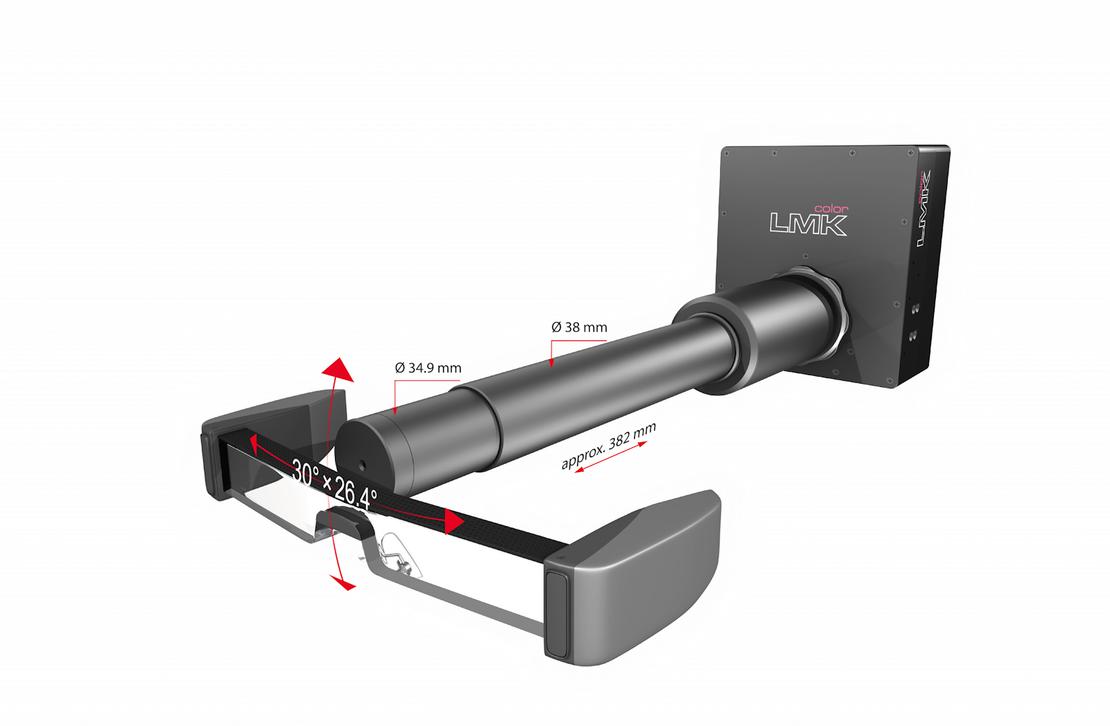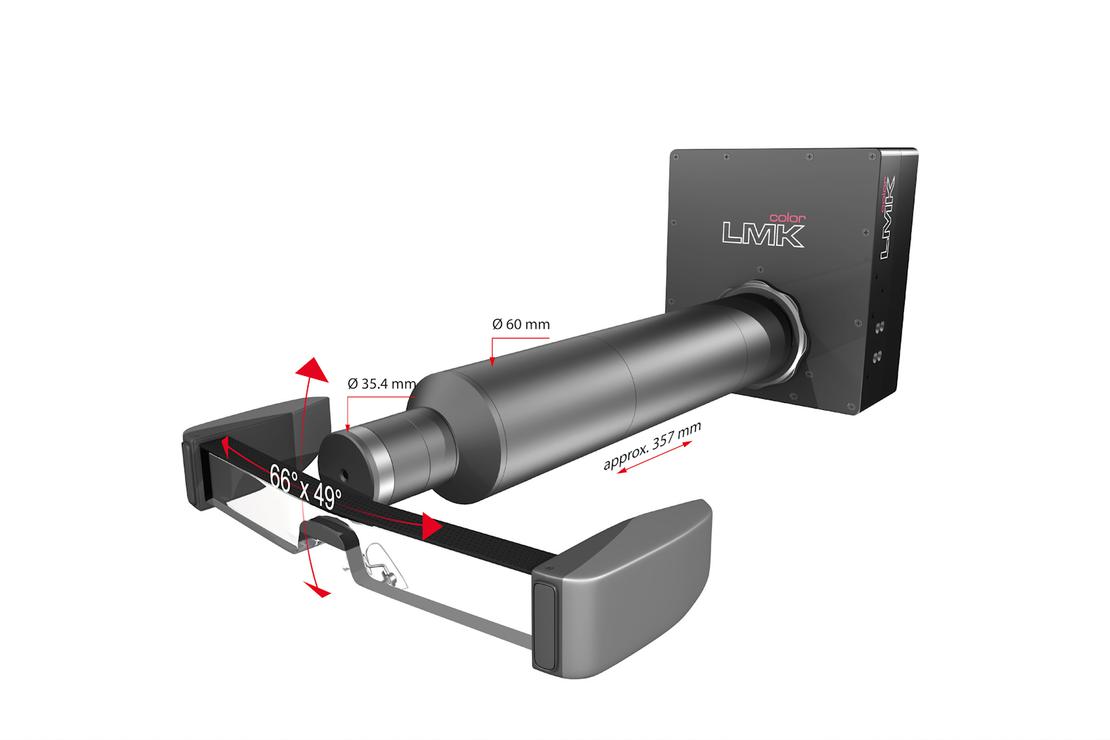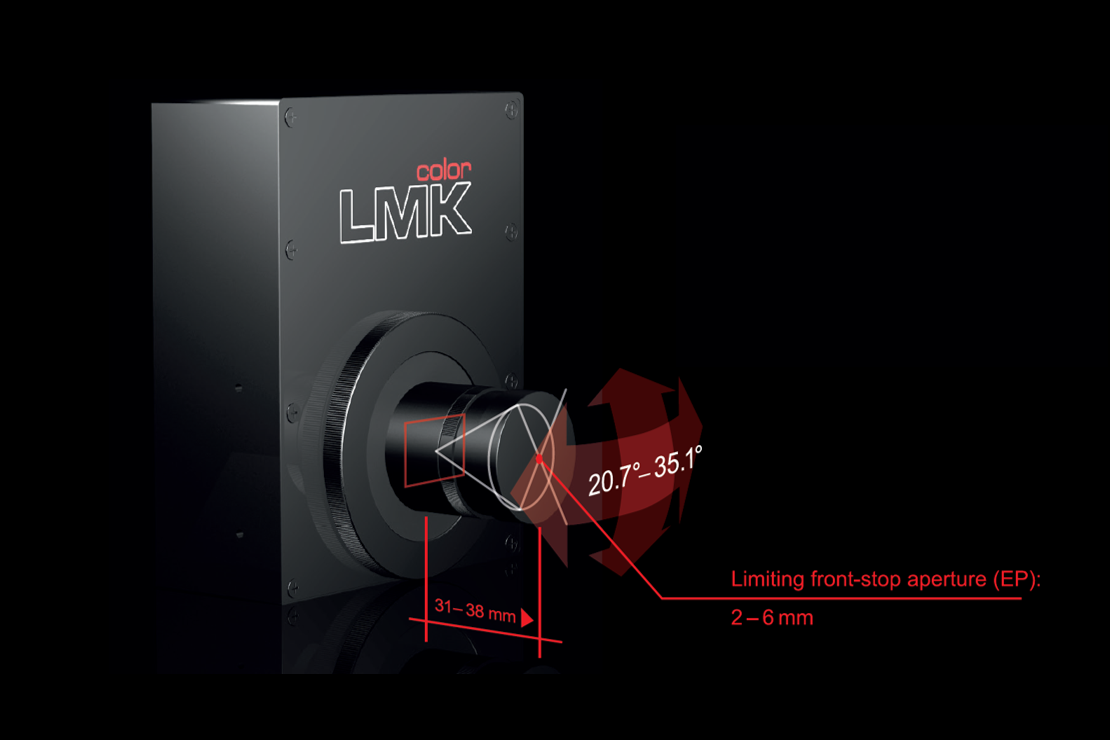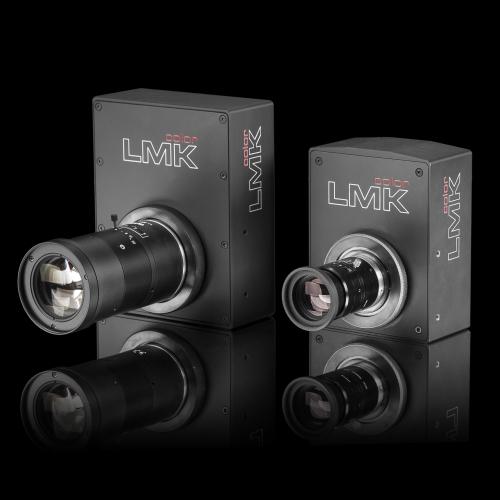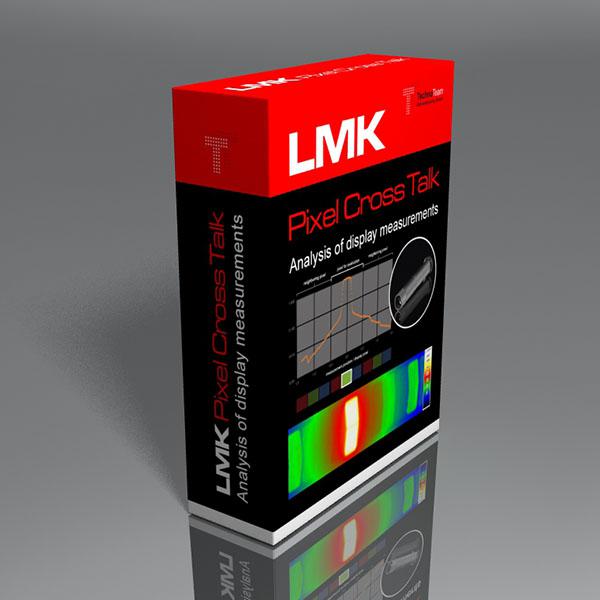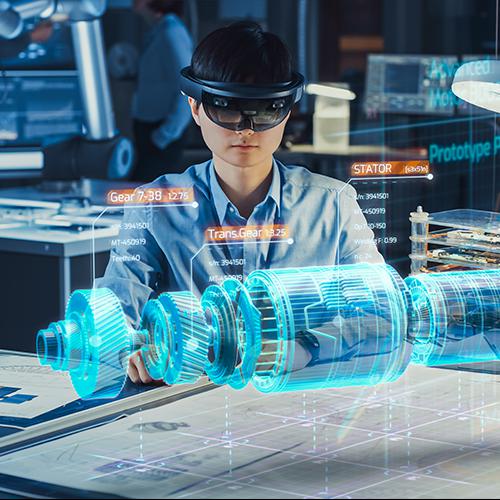NED Lenses with Liquid Lens Focus for AR/VR/MR Display Testing
Inspired by the human eye – The LMK EyeFit Lens series
LMK EyeFit is a lens series specially developed for NED measurements. Our patented LMK EyeFit lens design includes a liquid lens based focus mechanism that mimics the accommodation process of the human eye. When combined with a LMK 6-30 imaging photometer/colorimeter, it delivers enhanced image quality and a diffraction limited MTF outperforming most standard NED lenses that use a conventional mechanical focus mechanism. The different focal lengths are optimized for different measurement tasks for efficient and standard compliant AR, VR and MR display testing.
SEE IT WITH YOUR OWN EYES
LMK EyeFit – Features at a Glance
- Liquid lens focus from -10 dpt to + 10 dpt
- No shift in the entrance pupil position during focusing
- No mechanical movements
- Diffraction-limited MTF (see technical data below)
- Compact design enables eye rotation movements
- Custom external entrance pupils (between 2 mm and 6 mm)
- Custom addition of neutral density filters
- Compliant to IEC 63145 and IDMS 1.3 Chapter 19
Technical data
| Lens type | TTNED-40-AFS | TTNED-40-AFL | TTNED-17-AF |
|---|---|---|---|
| Focus operation | Electronically controlled focus | Electronically controlled focus | Electronically controlled focus |
| Focal length | 40 mm | 40 mm | 17 mm |
| Focal power | -5 dpt to +10 dpt | -5 dpt to +10 dpt | -10 dpt to +10 dpt |
| Focus distance | > 100 mm to infinity | > 100 mm to infinity | > 200 mm to infinity |
| Entrance pupil position | at position of the aperture cap | at position of the aperture cap | at position of the aperture cap |
| Entrance pupil diameter | 2 – 6 mm pinhole diameter of the aperture cap | 2 – 6 mm pinhole diameter of the aperture cap |
2 – 5 mm pinhole diameter of the aperture cap |
| Field of view (total) | LMK 6-30: ±15° (H) × ±12.8° (V) | LMK 6-30: ±15° (H) × ±13.1° (V) | LMK 6-30: ±33° (H) × ±24.5° (V) |
| Field of view with diffraction limited* MTF for 2 mm entrance pupil | ±14° |
±10° |
±30° |
| Field of view with diffraction limited* MTF for 3 mm entrance pupil | ±9.5° | ±7.4° | ±9.5° |
| Field of view with diffraction limited* MTF for 4 mm entrance pupil | ±6.2° | ±2.5° | ±2.0° |
| Field of view with diffraction limited* MTF for 5 mm entrance pupil | ±3.8° | ±1.0° | not diffraction limited |
| Field of view with diffraction limited* MTF for 6 mm entrance pupil | ±2.4° | not diffraction limited | not available |
| Imaging resolution | 195 cpx/deg | 191 cpx/deg | 98 cpx/deg |
| Length of lens body | 64 mm | 382 mm | 357 mm |
| Diameter of lens body | 35 mm at entrance pupil position
60 mm at widest position |
35 mm at entrance pupil position
60 mm approx. 198 mm behind lens tip |
35.4 mm at entrance pupil position
60 mm approx. 58 mm behind lens tip |
| Lens | Technical specifications |
|---|---|
| TTNED-40-AFS | Focus operation: Electronically controlled focus Focal length: 40 mm Focal power: -5 dpt to +10 dpt Focus distance: > 100 mm Entrance pupil position: at position of the aperture cap Entrance pupil diameter: 2 – 6 mm pinhole diameter of the aperture cap Field of view (total): LMK 6-30: ±15° (H) × ±12.8° (V) Field of view with diffraction limited* MTF for 2 mm entrance pupil: ±14° Imaging resolution: 195 cpx/deg Length of lens body: 64 mm Diameter of lens body: 35 mm at entrance pupil position | 60 mm at widest position |
|
TTNED-40-AFL |
Focus operation: Electronically controlled focus Focal length: 40 mm Focal power: -5 dpt to +10 dpt Focus distance: > 100 mm to infinity Entrance pupil position: at position of the aperture cap Entrance pupil diameter: 2 – 6 mm pinhole diameter of the aperture cap Field of view (total): LMK 6-30: ±15° (H) × ±13.1° (V) Field of view with diffraction limited* MTF for 2 mm entrance pupil: ±10° Imaging resolution: 191 cpx/deg Length of lens body: 382 mm Diameter of lens body: 35 mm at entrance pupil position | 60 mm approx. 198 mm behind lens tip |
| TTNED-17-AF | Focus operation: Electronically controlled focus Focal length: 17 mm Focal power: -10 dpt to +10 dpt Focus distance: > 200 mm to infinity Entrance pupil position: at position of the aperture cap Entrance pupil diameter: 2 – 6 mm pinhole diameter of the aperture cap Field of view (total): LMK 6-30: ±33° (H) × ±24.5° (V) Field of view with diffraction limited* MTF for 2 mm entrance pupil: ±30° Imaging resolution: 98 cpx/deg Length of lens body: 357 mm Diameter of lens body: 35.4 mm at entrance pupil position | 60 mm approx. 58 mm behind lens tip |
*Diffraction limit definition: Strehl ratio >0.9 for v(λ) weighted spectra and 0 dpt focus (infinity)
35 mm NED lens
TechnoTeam's 35 mm NED lens is field-proven and has a manually adjustable focus and calibrated front-stops with diameters ranging from 2 mm to 6 mm. The compact size of the lens body makes it ideal for measuring and testing NED components.
Technical data
| Lens type | TTNED-35 |
|---|---|
| Focus operation | Manually controlled focus (MFL) |
| Focal length | 35 mm |
| Focus distance | > 200 mm to infinity |
| Entrance pupil position | at aperture cap position at the tip of the lens |
| Entrance pupil diameter | 2 – 6 mm pinhole diameter of the aperture cap |
| Field of view (total) | LMK 6-12: ±13° (H) × ±9.5° (V)
LMK 6-30: ±19.5° (H) × ±14.5° (V) |
| Length of lens body | 36 mm |
| Lens | Technical specifications |
|---|---|
| TTNED-35 | Focus operation: Manually controlled focus (MFL) Focal length: 35 mm Focus distance: > 200 mm to infinity Entrance pupil position: at aperture cap position at the tip of the lens Entrance pupil diameter: 2 – 6 mm pinhole diameter of the aperture cap Field of view (total): LMK 6-12: appr. ±13° (H) × ±9.5° (V) | LMK 6-30: appr. ±19.5° (H) × ±14.5° (V) Length of lens body: 36 mm |
RELEVANT PRODUCTS AND APPLICATIONS
Publications
CIE Midterm Meeting Vienna, Austria 2025
SID Vehicle Displays & Interfaces 2022
Information Display
International Conference on Display Technology (ICDT 2019)
- Type:
- Optical component
- Applications:
- Automotive Aviation Display Human Centric Lighting
- Measurands:
- Light measurement
- Tasks:
- Development & Industry Science & Research
